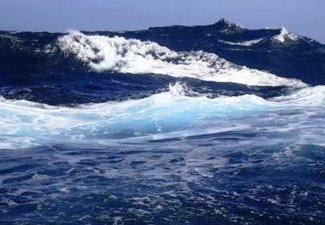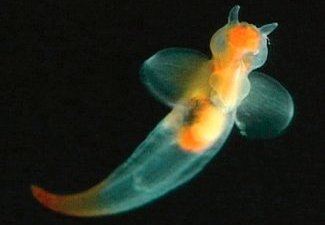
Bremerhaven – Ocean acidification could change the ecosystems of our seas even by the end of this century. Biologists at the Alfred Wegener Institute, Helmholtz Centre for Polar and Marine Research (AWI), have therefore assessed the extent of this ominous change for the first time.
In a new study, they compiled and analyzed all available data on the reaction of marine animals to ocean acidification. The scientists found that whilst the majority of animal species investigated are affected by ocean acidification, the respective impacts are very specific. The AWI-researchers presented their results as an Advance Online Publication on 25 August 2013 in Nature Climate Change.
The oceans absorb more than a quarter of anthropogenic carbon dioxide emitted to the atmosphere. They form a natural store without which the Earth would now be a good deal warmer. But their storage capacities are limited and the absorption of carbon dioxide is not without consequence. Carbon dioxide dissolves in water, forms carbonic acid and causes the pH value of the oceans to drop – which affects many sea dwellers. In recent years, much research has therefore been conducted on how individual species react to the carbon dioxide enrichment and the acidifying water. So far, the overall extent of these changes on marine animals has been largely unknown.
In order to gain an initial overview, Dr. Astrid Wittmann and Prof. Hans-Otto Pörtner from the Alfred Wegener Institute, Helmholtz-Centre for Polar and Marine Research (AWI), surveyed all studies so far conducted which dealt with the consequences of ocean acidification for marine species from five animal taxa: corals, crustaceans, molluscs, vertebrates such as fishes, and echinoderms such as starfish and sea urchins. By the end, they had compiled a total of 167 studies with the data from over 150 different species. In order to classify these results, they used emission scenarios for carbon dioxide on which the world climate report is also based. These scenarios allow to forecast the impacts of different carbon dioxide concentrations in the atmosphere far into the future.
The results of this new assessment are clear. “Our study showed that all animal groups we considered are affected negatively by higher carbon dioxide concentrations. Corals, echinoderms and molluscs above all react very sensitively to a decline in the pH value,” says Dr. Astrid Wittmann. Some echinoderms such as brittle stars have lower prospects of survival in carbon dioxide values predicted for the year 2100. By contrast, only higher concentrations of carbon dioxide would appear to have an impact on crustaceans such as the Atlantic spider crab or edible crab. However, the sensitivity of the animals to a declining pH value may increase if the sea temperature rises simultaneously.
Scientists from the Alfred Wegener Institute have determined the consequences of ocean acidification on the fitness of the individual species using physiological features. “For example, we considered whether metabolism, growth, calcification or behaviour change in high carbon dioxide concentrations,” explains Prof. Dr. Hans-Otto Pörtner.

The reason for different taxa reacting differently to ocean acidification is that they differ fundamentally in terms of their bodily functions. Whilst fish, for example, are physically very active and are able to balance any initial fall in the pH value very well in their blood, this is more difficult for corals. They spend their entire life in one place and cannot compensate as well for a higher carbon dioxide level in their bodies because they lack efficient physiological mechanisms. Failure to compensate the pH value in the body fluids can result, for example, in lower coral calcification, i.e., its calcareous skeleton does not protect against erosion and it cannot be repaired or developed as well.
The presumption that fish can cope with ocean acidification better than corals also becomes evident on taking a look in the past. “We compared our results with the wide-spread deaths of species around 250 and 55 million years ago when CO2 concentrations were also elevated. Despite the relatively rough statements, we were able to make with the assistance of sediment samples from the past, we discovered similar sensitivities in the same animal taxa,” explains Prof. Hans-Otto Pörtner. The spread of the corals and the size of the reefs slumped drastically 55 million years ago whilst fish exhibited a great adaptive capacity and were able to further extend their dominance.
The finding that in the past fish were not highly sensitive to acidic water surprises the scientists because current research results show that fish at the larval stage are quite sensitive to ocean acidification. “Not all effects we are currently measuring are decisive for the destiny of a species possibly in the long term,” explains Pörtner.


















